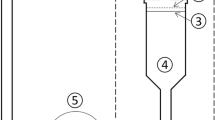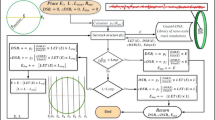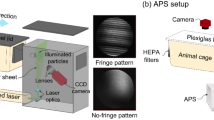Abstract
THE decay of a radon atom results in the production of an atom of the first daughter, 218Po, traditionally called RaA. This RaA atom may collide with and become attached to one of the condensation nuclei present in the atmosphere, and the fraction, f, of RaA atoms which are in the unattached state is of interest in any assessment of the hazard arising from the inhalation of radon daughter products1. One might expect f to depend primarily on the concentration, Z, of condensation nuclei in the atmosphere (such nuclei nearly always form the major part, in terms of numbers of particles, of the atmospheric aerosol), but there are other parameters which are likely to influence f, for example, the size distribution of the condensation nuclei, the charge carried by these nuclei, the rate of change of the nucleus concentration, and the rate of change of the RaA concentration. In addition, in some circumstances the losses of unattached RaA atoms by collision with surfaces, such as walls, may be significant and such losses are yet another factor having some influence on f.
This is a preview of subscription content, access via your institution
Access options
Subscribe to this journal
Receive 51 print issues and online access
$199.00 per year
only $3.90 per issue
Buy this article
- Purchase on Springer Link
- Instant access to full article PDF
Prices may be subject to local taxes which are calculated during checkout
Similar content being viewed by others
References
Stewart, C. G., and Simpson, S. D., IAEA Proc. Symp. Radiological Health and Safety in Mining and Milling Nuclear Materials, Vienna, 1, 333 (1964).
Jacobi, W., Biophysik, 1, 175 (1963).
Raabe, O. G., Health Phys., 17, 177 (1969).
Duggan, M. J., and Howell, D. M., Health Phys., 17, 423 (1969).
Metnieks, A. L., and Pollak, L. W., Geophysical Bulletin, 16, Dublin Institute for Advanced Studies (1959).
Author information
Authors and Affiliations
Rights and permissions
About this article
Cite this article
DUGGAN, M., HOWELL, D. Relationship between the Unattached Fraction of Airborne RaA and the Concentration of Condensation Nuclei. Nature 224, 1190–1191 (1969). https://doi.org/10.1038/2241190a0
Received:
Revised:
Issue Date:
DOI: https://doi.org/10.1038/2241190a0
Comments
By submitting a comment you agree to abide by our Terms and Community Guidelines. If you find something abusive or that does not comply with our terms or guidelines please flag it as inappropriate.



